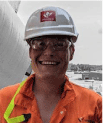Multiple world first technology applications on Julimar Development Phase 2 – multizone openhole gravel packing with enhanced shunted screens and zonal isolation in high rate gas wells and 18″ reel lay for corrosion resistant alloy (CRA) flowlines
Ben Witton A * and Ross Markham AA Woodside, Perth, WA, Australia.
The APPEA Journal 62 S205-S208 https://doi.org/10.1071/AJ21213
Accepted: 7 April 2022 Published: 13 May 2022
© 2022 The Author(s) (or their employer(s)). Published by CSIRO Publishing on behalf of APPEA.
Abstract
Project delivery certainty is a key success factor for positive business outcomes. Taking on world first applications across multiple delivery streams comes with risk that requires significant risk reduction to meet business requirements. The Julimar Development completed this successfully across both drilling and completions, and subsea. Reliable multizone completions with robust sand control have traditionally been a challenge in high-rate gas wells. Cased hole stacked gravel packs can leave high mechanical skin, require multiple trips and are complex operations. While OpenHole Gravel Packs (OHGPs) have provided reliable sand control in such wells, multizone applications have been limited due to the trade-off between effective gravel placement and zonal isolation. Recent developments in technology have enabled reliable gravel placement and complete zonal isolation. The largest flow line installation by reel lay for corrosion resistant alloy (CRA) flowlines was previously 16″. Increasing this size to 18″ required an in-depth understanding of key risks for the contractor to deliver on the size increase, and for Operator to engineer in risk mitigation. Key areas to understand included vessel capability, new build spool base, engineering methods to support delivery and the Operators role in change management when additional risks are identified, or issues occur. This paper discusses contracting, design, execution and evaluation of technologies on the Julimar Development. It includes methodology followed for both technology selections, engineering development, qualification tests, post project evaluation, lessons learned along with health and safety benefits.
Keywords: corrosion-resistant alloy, enhanced shunted screens, Julimar Phase 2, lateral buckle control, MLPP insulation, multizone openhole gravel pack, reel lay, residual curvature, subsea tieback, zonal isolation.

Ben Witton holds a Master of Engineering Degree in Aerospace Engineering from the University of Manchester and is Engineering Fellow of IMechE. Ben was the SURF EPCI lead for Julimar Phase 2 Project and has experience from concept definition through to completion of offshore execution and handover to operations. Ben has over 17 years of international pipelay and subsea construction experience. He enjoys work that is technically challenging and creates a positive legacy. Ben is dedicated to a quality outcome and committed to ensuring his team execute work safely without damaging the environment. When not at work, Ben enjoys racing mountain bikes. |

Ross Markham holds a Bachelors Degree in Science and Engineering from the University of Western Australia. Ross was the completions team lead for Julimar Phase 2 Project and has more than 10 years industry experience. |
References
British Standards (2019) ‘BS7910 Guide to Methods for Assessing the Acceptability of Flaws of Metallic Structures.’ (British Standards Institution: London) Available at https://www.en-standard.eu/bs-7910-2019-guide-to-methods-for-assessing-the-acceptability-of-flaws-in-metallic-structures/Det Norske Veritas (2013) ‘DNV-RP-A203 Technology Qualification.’ (Det Norske Veritas: Hovik) Available at https://www.dnv.com/oilgas/download/dnv-rp-a203-technology-qualification.html
Det Norske Veritas (2017) ‘DNV-RP-F108 Fracture Control for Pipeline Installation Methods Introducing Cyclic Plastic Strain.’ (Det Norske Veritas: Hovik) Available at https://www.dnv.com/oilgas/download/dnv-rp-f108-assessment-of-flaws-in-pipeline-and-riser-girth-welds.html
Det Norske Veritas Germanischer Lloyd (2018) ‘Report No. 2017-3114 Rev 1, DNVGL Guideline for Design and Construction of Lined and Clad Pipelines.’ (Det Norske Veritas: Hovik) Available at https://www.dnv.com/oilgas/publications/
Johnson H (2022) Collaborating to bring new technology on developments. The APPEA Journal 62, S127–S131.
| Collaborating to bring new technology on developments.Crossref | GoogleScholarGoogle Scholar |


